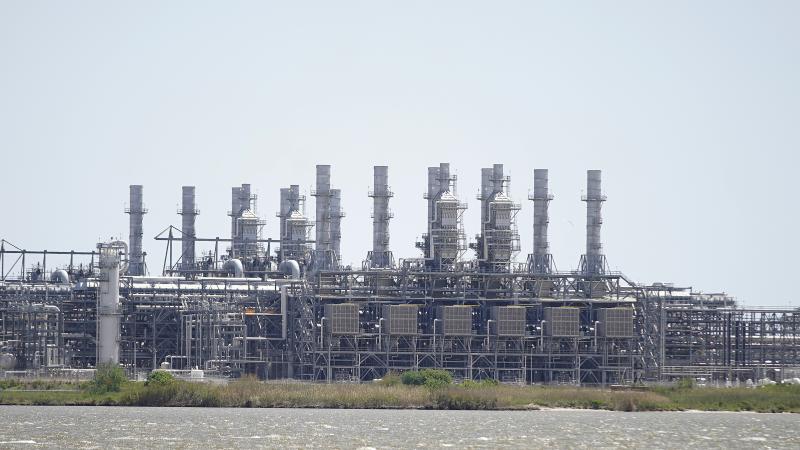PJM power surge inevitable, but not insurmountable
The primary drivers of the increase include: retirement of traditional generation units and the growing use of intermittent renewable energy resources; delays in PJM’s interconnection queue; supply chain and construction delays;
(The Center Square) -
Pennsylvania’s ability to remain a net electricity exporter may hinge on how it balances surging demand from data centers and other large energy users with investments in new generation and infrastructure upgrades.
That was the focus as energy sector leaders met this week to discuss the state’s evolving power landscape and how best to meet its challenges.
At a joint hearing of the Senate Environmental Resources and Energy Committee and the Consumer Protection and Professional Licensure Committee, two panels of experts shared insights on grid reliability, resource adequacy, capacity market dynamics, the impact of data centers and plant retirements, and the urgent need for new generation.
“This hearing could not be more timely,” said Sen. Gene Yaw, R-Williamsport, chair of the Environmental Resources and Energy Committee.
“Pennsylvania stands at a critical crossroads,” he continued. “Our electric grid is being tested by the pressures of generation retirements and unprecedented demand growth, particularly from data centers. We must ensure we have the policy tools and infrastructure in place to meet this challenge head-on.”
Stephen DeFrank, chairman of the Pennsylvania Public Utility Commission, cited PJM’s recent Energy Transition Report on Resource Retirements, Replacements & Risk, or “Four R” Report, which identifies 40 GW of generation at risk of retirement.
He also noted that PJM’s capacity auction resulted in a significant price increase for the 12-month period beginning June 2025.
The primary drivers of the increase include: retirement of traditional generation units and the growing use of intermittent renewable energy resources; delays in PJM’s interconnection queue; supply chain and construction delays; and projected load growth, particularly from data centers and AI, which could rise from 4% of demand today to 16% by 2039.
Recognizing these challenges, the commission has recently hosted a Technical Conference on Resource Adequacy and an en banc hearing on the subject of large load tariffs for electric distribution companies.
DeFrank emphasized the importance of thinking “outside-the-box” to find new policies and tools to “facilitate an affordable, safe, and reliable energy future for all Pennsylvanians.”
Jason Stanek, PJM’s executive director of government services, warned that shrinking supply and growing demand is driving up prices – not just in Pennsylvania, but nationwide. “We’re doing our best to mitigate these prices in the confines of a competitive market,” he said.
Stanek also discussed Gov. Josh Shapiro’s complaint against PJM alleging the capacity auction price cap was too high given lower near-term new generation expectations. A settlement approved by FERC in April will apply to the 2026-2028 auctions, setting a price cap of $325 and a floor of $125.
To expedite generation, PJM’s Reliability Resource Initiative, or RRI, is fast-tracking shovel-ready projects in the queue.
Of 51 new generation projects awarded to date, seven are in Pennsylvania – five natural gas, one nuclear, and one wind project – totaling approximately 1200 MW. Stanek predicted 90% would be online by 2030.
He cautioned that states should avoid policies intended to push existing generation resources off the system until an adequate quantity of replacement generation is online and operating.
“Otherwise, the pace is unsustainable,” he said.
With the National Weather Service forecasting higher-than-average temperatures this summer, PJM expects a peak load of about 154,000 MW – which is within capacity. However, under extreme scenarios, it could potentially spike to 166,000 MW, which would exceed their reserve margins, leaving them short for the first time in PJM’s history.
Projects in the interconnection queue are being reviewed as quickly as possible, Stanek said. The backlog has dropped from 200,000 pending projects last year to about 70,000 this year – representing 67,000 MW of capacity. The goal is to clear the queue by next year.
Private sector leaders also presented major infrastructure plans to help close the state’s supply gap.
Corey Hessen, CEO of Homer City Redevelopment, detailed a $10 billion project to convert the former Homer City coal plant into a natural gas-powered data center campus – the largest of its kind in the U.S. An estimated 25% of the power generated on site will be distributed to the PJM grid.
Sen. Lisa Boscola, D-Bethlehem, minority chair of the Consumer Protection & Professional Licensure Committee, said the conversation is about balance and how to meet growing energy demand while also investing in energy efficiency and protecting consumers.
“Pennsylvania has always been an energy leader, and we need to have an all and above approach to keep us competitive in this state, attract new investment, and shield rate payers who are already stretched thin,” she said.













